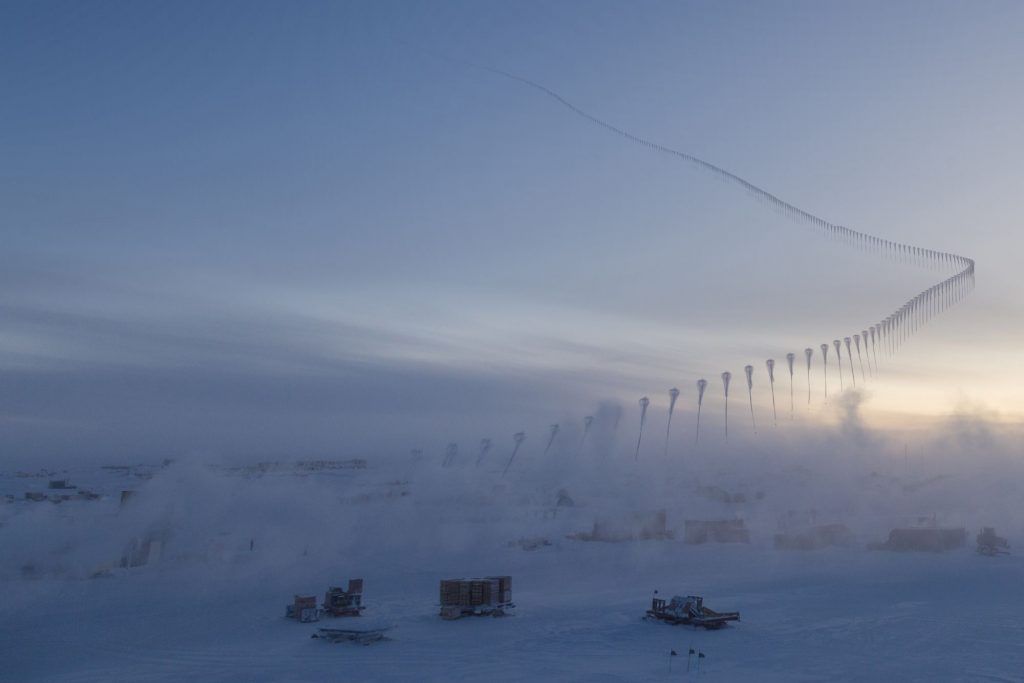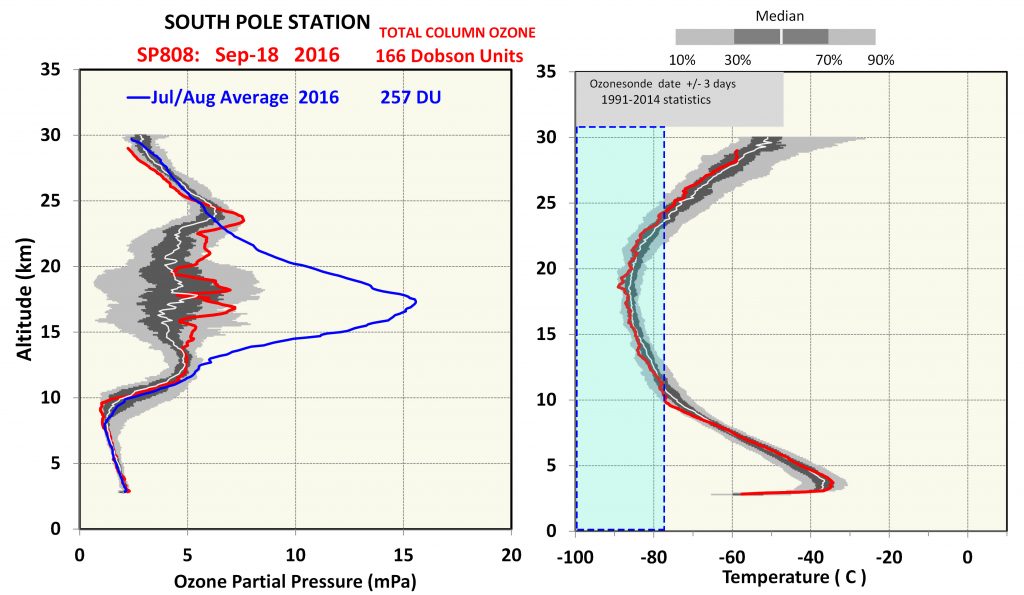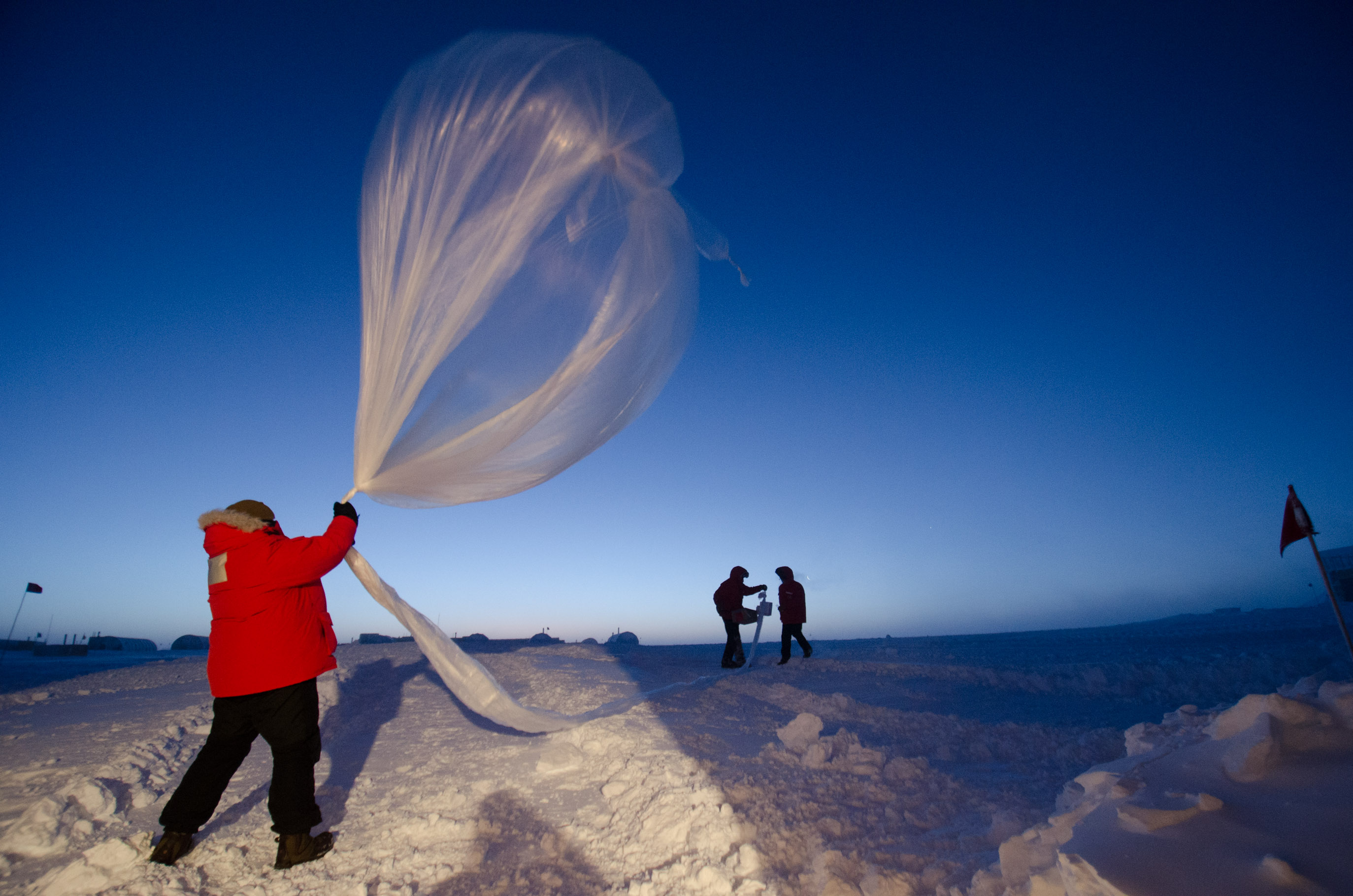
A composite photograph of flight SP808 launching in to the pre-dawn sky at the South Pole. Photo credit: Christian Krueger
With sunrise now only a few days away, NOAA scientists at the South Pole continue to launch balloons high in to the stratosphere to measure the quickly depleting ozone layer overhead. Free chlorine activated by the long-absent sunlight high in the stratosphere is currently destroying large swaths of protective ozone. The instrument on this balloon contains a small chemical sensor called an ozonesonde that measures the remaining ozone concentrations and transmits the data back to a ground station. The above photograph is a multi-image composite of the large, helium-filled balloon launched out of the South Pole’s Balloon Inflation Facility.

Comparing the September 18th flight plotted in red to the July/August average in blue, the vast amount of ozone destruction already seen is quite significant. In the left plot, the red line representing current ozone levels will continue to move left toward zero while in the right profile, temperatures will begin to increase with the return of sunlight. Throughout the darkness of winter, stratospheric temperatures were able to drop below -78° Celsius (blue box) where rare Polar Stratospheric Clouds (PSCs) form. One way these rare ice crystals promote extreme ozone destruction is with their ability to lock up Nitric Acid (HNO3), an important molecule in the deactivation of chlorine. When these ice crystals grow large enough they settle out of the lower stratosphere, a process called denitrification, removing themselves from the destruction zone. Only when temperatures warm and PSC crystals melt, will these chemicals begin to return to the stratosphere and deactivate the destructive free chlorine!
Here is a quick video showing the progression of the ozonesonde balloon flights for 2016 up until the most recent launch on September 18, 2016. (Video will be updated as new flight data is collected every 2-5 days through mid-October.)

